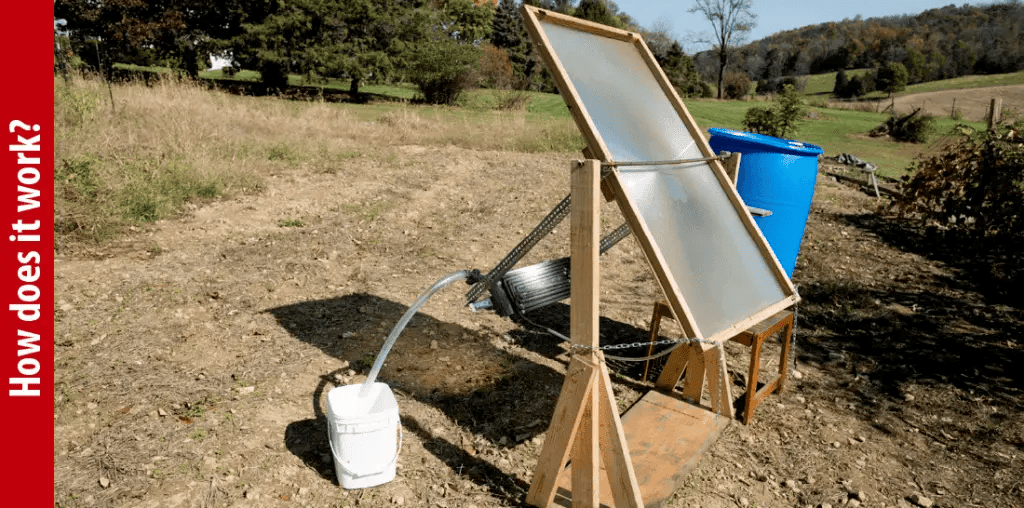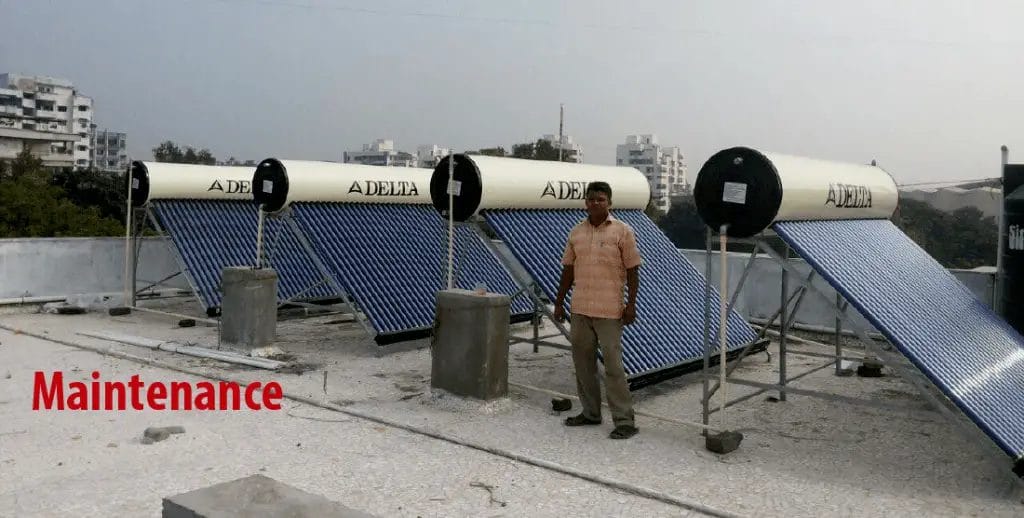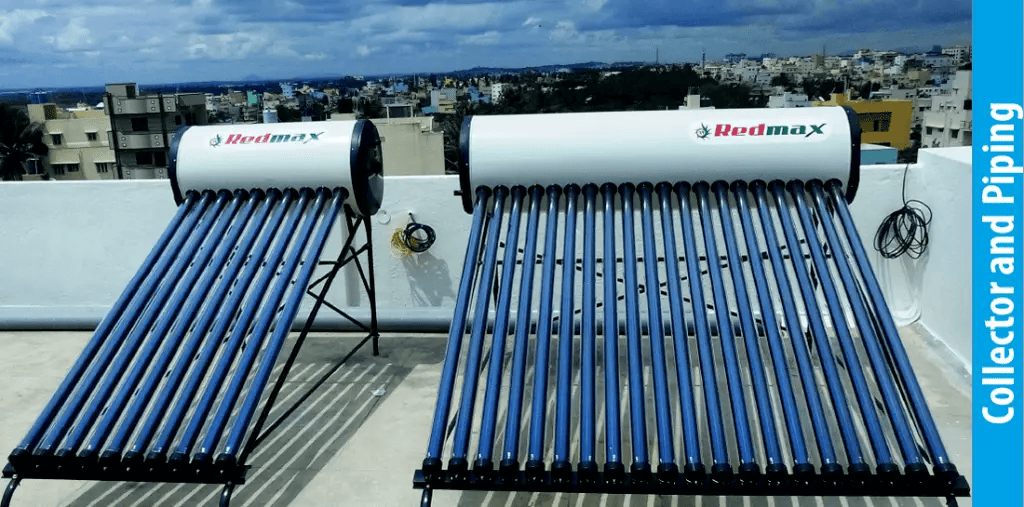The task of the solar water purifier is to purify, pump and disinfect water. It applies the huge potential of carbon emissions from the boiling water.
People use firewood and charcoal to boil water. It is sure that many people live in rural areas and they face health, sanitation and water problems. The target of this purifier is to enhance communities’ ownership. Another aim of the local entrepreneurship is to upgrade a project within public-private partnerships.
A public donor, based on public-private partnership used a water filtration system in Lao village. The purification offers recyclable plastic polyethylene bottles and accessories to produce chlorine.
It is applied to disinfect bottles as soon as these bottles returned for refilling. All villagers have got the system. It is managed by a Village Water Committee (VWC).
The system is used to clean, pump and sterilize water for upgrading standard of water.
The entrepreneurs obtain operational training and initial technical skill from Sunlabob’s. They support the stipulation of changing components and water quality. The VWC receives training to manage the system efficiently.
Basic hygiene training will provide for the villagers about health improvements. The donors come ahead to provide the fund as the part of the complete service package.
What to keep in mind
Keep the water bottle under the sun for a certain period. Otherwise, it can be the cause of illness. This water isn’t safe enough to drink. If it is less sunny climate or overcast weather, long exposure of sun is a must.

The following issues should also be considered:
Bottle material
Some PVC materials or glass prevent the ultraviolet ray from approaching to water. Here commercially found bottles prepared from PET are suggested. Bottle produced from the PET is good option to do it.
Polycarbonate blocks prevent all UVB or UVA rays, so these aren’t suggested. Cleared bottles are preferred more than the color bottles of the green lemon bottle.
Some PVC or glass may resist ultraviolet light to approach near water. Therefore it is advised to use commercially found bottles made of PET. The maintenance of these bottles is very easy.
Aging of plastic bottles
SODIS efficiency of the plastic bottles depends on the physical condition of these bottles. It has scratches and another trace of wear deducting the power of SODIS. Blind, old and heavily scratched bottles must be changed.
Shape of containers
When the depth of water increases the intensity of UV radiation decreases quickly. For 10 cm water depth and moderate turbidity of 26 NTU, the UV-A radiation deducts up to 50%. Pet soft water bottles are found and these are very sensible for the SODIS use.
Oxygen
Sunlight creates oxygen in the water. Such types of reactive molecules play an important role in destroying microorganisms. Water contains enough oxygen in normal condition. It mustn’t be aerated prior the use of SODIS.
Leaching of bottle material
Now there is anxiety for the question of plastic drinking pot. The pot can release toxic components or chemicals into the water for using heat.
The Swiss Federal Laboratories for Materials Testing and Research examined the diffusion of phthalates and adipates at the time of solar exposure in water.
After the solar exposure for 17 hours under sixty degrees, the level of concentration remains below the guidelines of WHO. The reason is the concentration of adipate and phthalate found in top quality tap water.
The University of Heidelberg made a study on PET bottles and published a report. Therefore the concern has been increased for PET bottles stored in the supermarket.
Men use those bottles for a long time to use minerals and soft drink. The antimony got below the standard of WHO and national principle in drinking water. Moreover, SODIS bottles aren’t suggested to keep for an extended period.
Regrowth of bacteria
You can remove bacteria by keeping water under direct sunlight. The rest of the bacteria can reproduce again in a dark place.
A study in 2010 showed that adding 10 components per million of hydrogen peroxide is very effectual. It also helps to regenerate the process of wild Salmonella.
Toxic chemicals
Solar water disinfection may fail to remove poisonous chemicals which are found in water such as factory waste.
Benefits of Solar Water Purification
Keeping water under the direct sun has many benefits. The mentionable benefits are stated below:
- The rays of UVA the sun destroy cell structure of pathogens
- UVA rays work on oxygen in the water. The rays form hydrogen peroxides free radicals that destroy pathogens
- The system is inexpensive, portable and simple. It demands plastic bottles and sunlight.
- The collective attempt of exposing water for solar energy warms the water. This can enhance the motion of disinfection process.
How Does Solar Water Purifier Work
Sunlight exposure is used to neutralize diarrhea-causing organism in contaminated drinking water. The neutralization of pathogenic organism is addressed here. The UVA part of sunlight responds with oxygen mixed with water.

It produces most reactive types of oxygen that destroy pathogens. It interferes with metabolisms and demolishes bacterial cell structures. Moreover, the complete group of solar power heats up water.
As the temperature of the water is 30 degrees C, a threshold astral irradiance is a must for SODIS for five hours with 500W/m2. The aim of the solar irradiance is to make the SODIS more efficient.
The full dose has the energy of 55 W/m2 in a range of UV-A along with violet light 350 to 450 nm. This is equivalent to six hours of mid-latitude noontime summer sunshine.
As temperature goes over 45 degrees C, the synergistic impact of UV radiation increases the disinfection. The bacterial count goes down 3 times faster when the temperature is over 50 degrees C.
Process for household application

Guides for the household application of SODIS describe the process.
This is a kind of portable water purification system that applies solar energy to purify water. It removes virus, protozoa, bacteria and worms from the water. The method applies some mixture of electricity guided by heat, photovoltaic panels and solar ultraviolet light connection.
Solar thermal disinfection takes heat from the sun to heat water from 70 to 100 degree C for a limited period. It uses reflectors. Sometimes it uses glazing.
Some of the thermal water disinfection processes are batched based though other uses sun shines. The ultraviolet rays destroy pathogens in water. The system is now using in developed countries widely.
Stay the filled bottles under the direct exposure of sun as possible. Bottles become hot very under the sun. A little-curved sheet of aluminum foil or a corrugated metal roof speeds up the light inside the bottles.
You must avoid overhanging plants or structure. These plants reduce both heating and illumination. After keeping under the sun, consume water directly from the bottle or poured it into a clean drinking cups.
There are fewer possibilities of contamination if you keep the water in the bottles. Refilling water in other containers accelerates the possibilities of pollution.
The best-suited region of SODIS application lies between latitude 15°N and 35°N, and 15°S and 35°S. These regions have more solar radiation for limited rainfall and cloud cover.
Over 90% of sunlight reaches the earth surface straight from the radiation. The best region lies between latitudes °N and 15°S. There is a high level of scattered radiation for high humidity and recurrent cloud. It happens for approximately 2500 hours of sunshine annually.
The use of SODIS is essential to give off confusion between Pet and bottle materials. Using SODIS doesn’t appreciate other routes of infection. It is essential to receive training for the community at first.
Maintenance

Preventing Scaling and Corrosion
The performance of installing and sited solar water heating systems is greatly affected by 2 major factors. The factors are corrosion (in hydronic and air systems) and scaling (in liquid or hydronic-based systems).
Scaling
Domestic water contains the high mineral. It is responsible for mineral build up. The system gathers scaling deposit in the hydronic solar heating system. Scaling builds up hampers the performance in various ways.
When you use the system to transfer fluid, scaling may happen in the collector, heat exchanger, and distribution piping. Scaling can happen on the surface of the heat exchanger.
For this, heat removes from the solar collector to the household water. It may cause pump and valve failure for the filtered water loop.
You may remove scaling by circulating a soft acidic solution. You also can confiscate it by using a water softener through the domestic hot water loop or the collector. It depends on the water condition of your area.
You should clean heat exchanger surface carefully with medium- grain sandpaper. A cover round the external heat exchanger is a good way for the heat exchanger into the storage tank.
Corrosion
Almost all nice designed solar systems face minimal corrosion. These systems face normally galvanic decay. Corrosion happens for an electrolytic process due to 2 dissimilar metals come in contact with each other.
One metal has a strong positive charge that draws electrons from the other. This makes one of the metals corrode. Sometimes heat transfer fluid makes a bridge between metals at the time of exchanging electrons.
Oxygen goes into the loop hydronic solar system may cause corrosion in steel or iron components. This system has bronze, plastic, glass or plastic lined cargo. Moreover, the process has space tanks brass, stainless steel, rubber components inside the plumbing loop.
Freeze Protection
The solar water heating system uses liquids for heating. It transfers fluids from freezing where the temperature is less than 42 degrees F.
It isn’t wise to rely on the pipings’ or collector’s insulation to preserve from freezing. The mission of the insulation is to increase performance and decrease heat loss. There are basically two alternatives. You have to save the piping and collectors from damage for freezing temperatures.
Use an antifreeze solution as the heat-transfer fluid
Drain piping or collector automatically turns off when the temperature drops under the liquids’ freezing point.
Using an Antifreeze Solution
The solar water heating method applies an antifreeze solution for heat transfer fluid. It has proper antifreeze concentration and freezes protection. Antifreeze should change after three to five year of use.
It degrades for overtime use. The system is pressurized one. So homeowners should notice the condition of the antifreeze solution. When you suffer from such type of problem, you must buy solar heating professional.
Draining the Collector and Piping
Solar water heating systems use water as a heat transfer fluid to freeze damage. Drainback or Draindown systems utilize a controller drain for the collector loop automatically.
Sensors of the storage tank and collector will warn to drain the collector loop. This time storage tank shuts off the flow. It tells the time to restart the pump.

Be sure the sensors are properly installed by the instruction of the manufacturers. The utility of low-quality sensor and improper placement may lead to the failure of distinguishing freeze condition.
Moreover, the controller fails to drain the system. Inexpensive sensors damage the controller. You need to examine the controller at least once in a year to be sure that it is working correctly.
Be sure; the collector loop drains absolutely. There remains a way to prevent a vacuum from gathering inside the collector loop.
An air vent is set up to the highest point of the collector loop. It’s a nice practice to insulate air vents since it mayn’t freeze. Nothing blocks the flow of air of the system if the drain cycle is active.
Piping and collectors should slope well to drain water completely and properly. All piping and collectors may have a minimum slope of 0.25 inches after 1 foot (2.1 centimeters per meter).
Keeping the huge amount of insulation at night will save the collector from the cold temperature. The water of the collector may freeze for a long period of keeping in cold weather.
The return pipes and collector supply pipes are susceptible to freezing. They run through an unheated space and outside. This may occur if the pipes are completely insulated. This is a wise idea to drain the whole system to escape freeze damage. One should do it prior freezing temperature happen.
Sarah J. Gregory
352 Hershell Hollow Road
Anaheim, CA 92805






